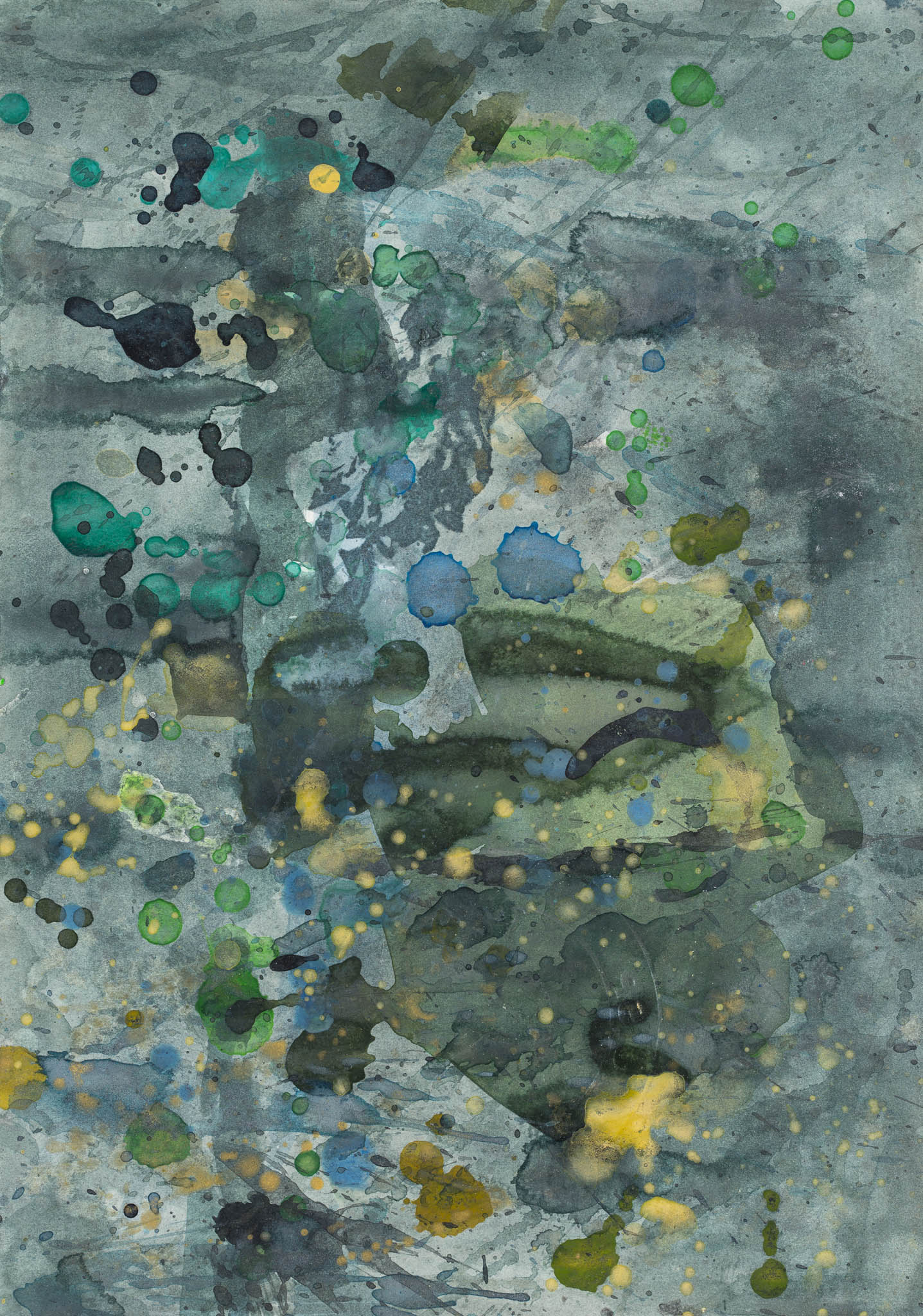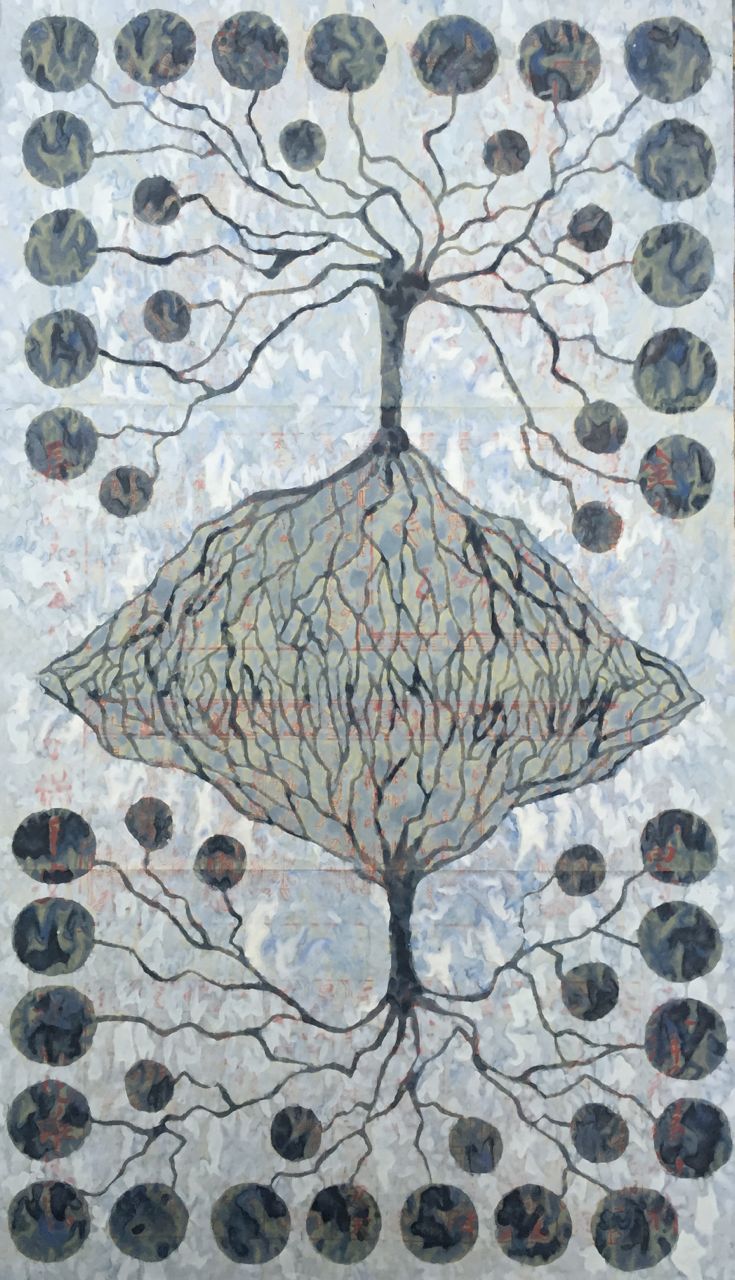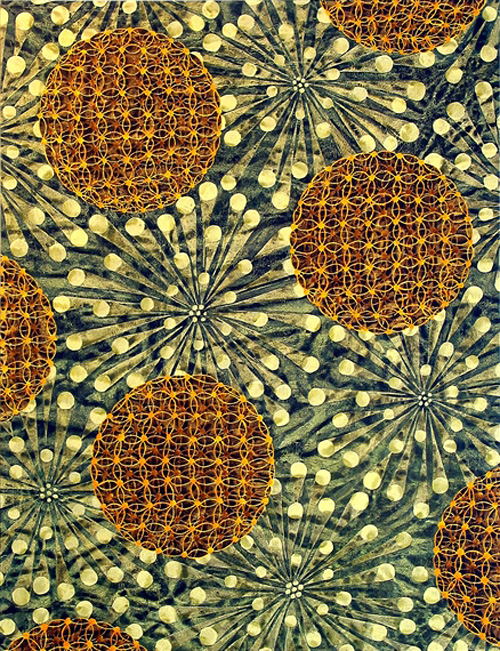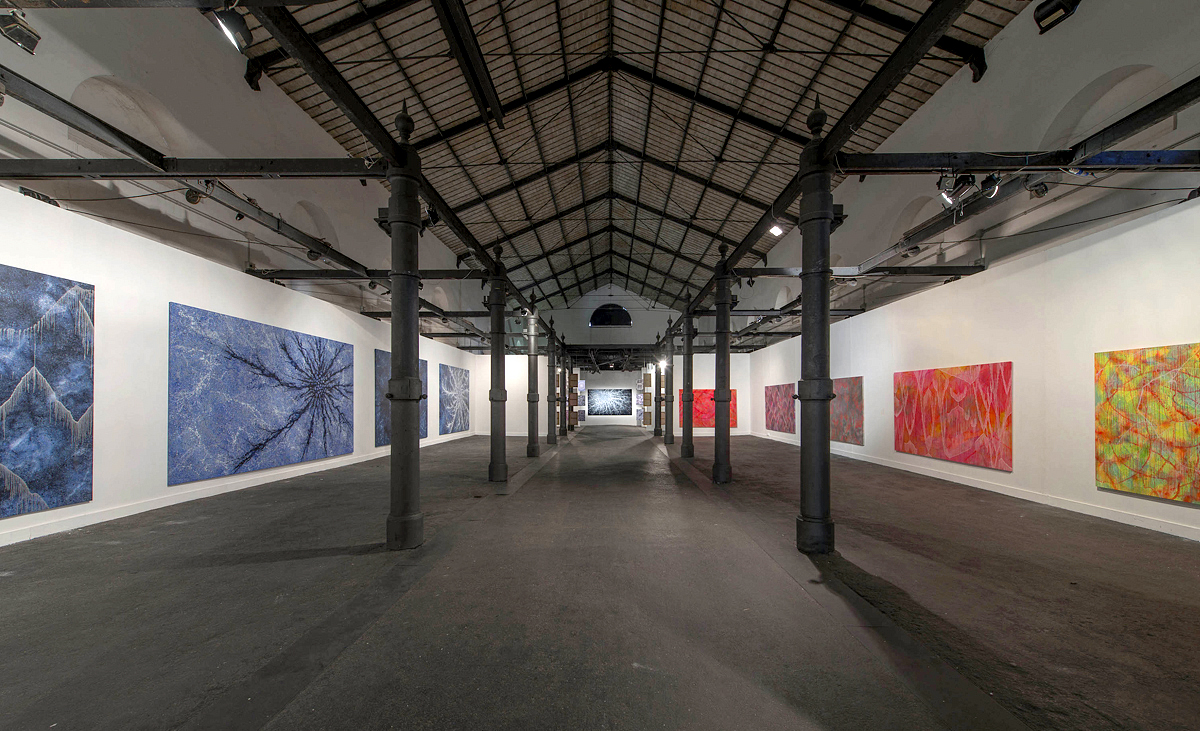- Neurone e Cosmo, 2012
Acrylic on paper - Tutto, 2016
Acrylic on paper - Atomi, 2010
Acrylic and ink on paper, 52 x 28 cm - Albero della Vita, 2010
Acrylic and ink on paper - Untitled, 2010
Acrylic on paper - Studio view
- Exhibition view - Cosmicamente
MACRO, Rome, 2016
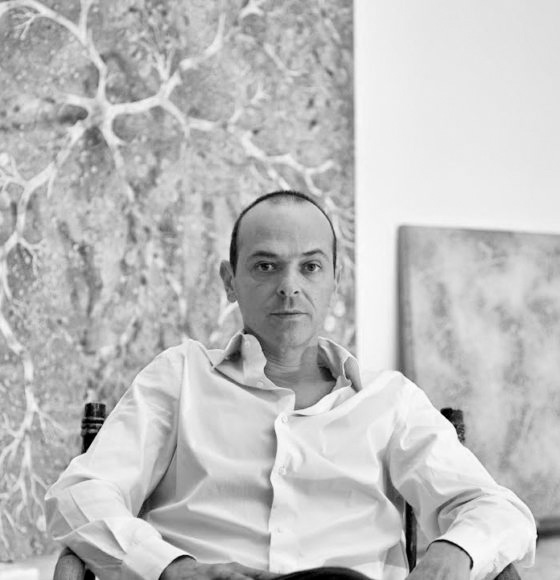
Alberto Di Fabio was born in Avezzano in 1966. He moved to Rome to attend the via di Ripetta Art High School (1980-1984) and the Academy of Fine Arts. At that time, Aligheiro Boetti and Cy Twombly became interested in his work and acted as his mentors, among other influential artists.
During the Nineties, he frequently spent time in New York, where he was fascinated by American Abstract Expressionism. He soon had a number of solo exhibtions, not only in the US, but all around the world.
Since 2001, Di Fabio has been living in Rome, even though he regularly visits New York, where his atelier is still based, and he recently also set up a studio in Tokyo.
Alberto Di Fabio is taking inspiration from the world of natural sciences such as biology, chemistry and astronomy. His painting explores atoms, cell structures, neurons, DNA chains, constellations and galaxies giving life to shapes – often geometrical – in bright, pure colors that spin and vibrate all over his canvases, creating contrasts and harmonious scales, tonal variations and amazing juxtapositions, involving the observer in extrasensory kinetic experiences.

Alberto Di Fabio was born in Avezzano in 1966. He moved to Rome to attend the via di Ripetta Art High School (1980-1984) and the Academy of Fine Arts. At that time, Aligheiro Boetti and Cy Twombly became interested in his work and acted as his mentors, among other influential artists.
During the Nineties, he frequently spent time in
New York, where he was fascinated by American Abstract Expressionism. He soon had a number of solo exhibtions, not only in the US, but all around the world.
Since 2001, Di Fabio has been living in Rome, even though he regularly visits New York, where his atelier is still based, and he recently also set up a studio in Tokyo.
Alberto Di Fabio is taking inspiration from the world of natural sciences such as biology, chemistry and astronomy. His painting explores atoms, cell structures, neurons, DNA chains, constellations and galaxies giving life to shapes – often geometrical – in bright, pure colors that spin and vibrate all over his canvases, creating contrasts and harmonious scales, tonal variations and amazing juxtapositions, involving the observer in extrasensory kinetic experiences.

